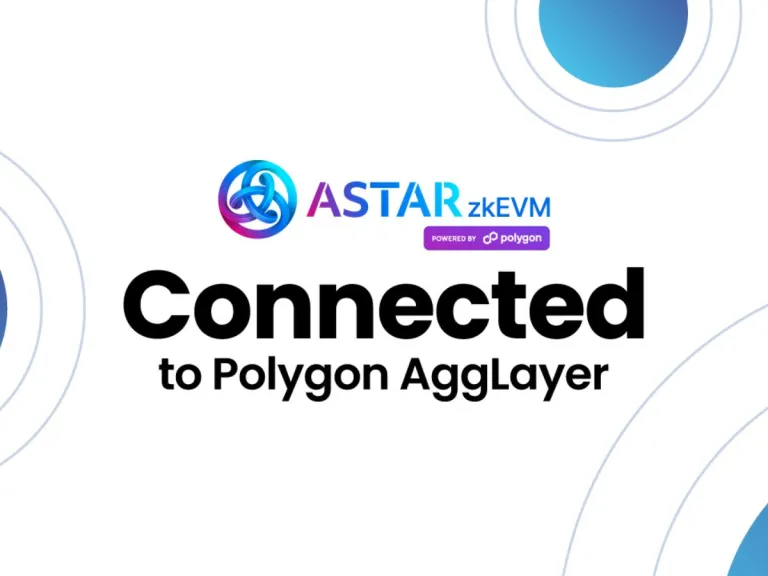After wrapping up Polkadot 1.0 in July 2023, the blockchain community is now gearing up for Polkadot 2.0, backed by tech upgrades like Async Backing, Elastic Scaling, and Agile Coretime.

After the successful launch of Polkadot 1.0 in July 2023, the blockchain community is now eagerly awaiting the arrival of Polkadot 2.0, which will introduce a range of groundbreaking technological advancements. These upgrades, including Async Backing, Elastic Scaling, and Agile Coretime, are set to revolutionize the network's capabilities.
At the heart of the Polkadot ecosystem lies the Polkadot SDK, which provides developers with a comprehensive toolkit for creating custom blockchain projects. The system's core components, the Polkadot Chain and the Polkadot DAO, further streamline the development process, enabling developers to easily integrate their projects into the wider Polkadot network.
According to a recent analysis by Messari, these upgrades will allow Polkadot to operate seamlessly, much like cloud services such as AWS or Azure. High-demand projects will benefit from increased transaction throughput, while early-stage projects will only pay for the coretime they actually need.
The Polkadot Chain, which serves as the network's central hub, operates on a Nominated Proof-of-Stake (NPoS) consensus mechanism. This system allows DOT holders to participate in the network's security by nominating validators to add blocks to the chain. In return for their contributions, validators and nominators earn rewards in the form of newly minted DOT tokens.
As Messari further explains, Agile Coretime is a central feature of Polkadot 2.0, designed to address inefficiencies in the previous system. This mechanism dynamically allocates computing resources according to network demand, optimizing utilization and reducing waste.
Elastic Scaling takes this concept a step further by enabling parachains to use multiple cores within a single Polkadot Chain block. This boosts network throughput and efficiently manages higher transaction loads.
Asynchronous Backing further improves block generation and validation by cutting block time in half and allowing for parallel transaction validation and block production.
“Polkadot 2.0 addresses high entry barriers and resource inefficiencies with Agile Coretime, Elastic Scaling, and Asynchronous Backing. The current slot auction model, where parachains rent blockspace for up to two years, will be replaced with more flexible on-demand and bulk models for purchasing blockspace,” the Messari report reads.
On the operational front, the DOT token serves as Polkadot's native currency, used for governance, staking, bonding, and paying transaction fees. With over 1.3 million onchain wallets, DOT holders have full decision-making power over the platform's direction through its advanced governance system OpenGov.
Polkadot's Nominated Proof of Stake (NPoS) system allows DOT holders to earn rewards by backing validators, securing the network in the process. Parachains, meanwhile, must lock up DOT tokens to secure slots, a mechanism that will be phased out with the introduction of Agile Coretime.
DOT also functions as the payment method for network fees, which are determined by a combination of base fees, weight fees, and length fees. The token has an uncapped maximum supply, with a current circulation of 1.4 billion DOT as of June 2024.
Moving to the economic side, Polkadot's inflation model incentivizes network participation through a 10% annual inflation rate, which can be adjusted via onchain governance. This inflation rate is divided between the treasury, validators, and nominators, with allocation percentages varying based on the proportion of DOT staked.
The above is the detailed content of Polkadot 2.0 Promises a Cloud-Like Experience for Blockchain Developers. For more information, please follow other related articles on the PHP Chinese website!
 Inter Miami Teams Up with Polkadot, Features Lionel Messi as Its CaptainSep 01, 2024 am 06:35 AM
Inter Miami Teams Up with Polkadot, Features Lionel Messi as Its CaptainSep 01, 2024 am 06:35 AMThe Terms of the Deal Inter Miami – one of the major American soccer clubs – teamed up with the blockchain software platform Polkadot. The latter will serve as the team's Global Training Partner
 Polkadot币值得长期持有吗?Polkadot币值得投资吗?Mar 05, 2024 am 09:16 AM
Polkadot币值得长期持有吗?Polkadot币值得投资吗?Mar 05, 2024 am 09:16 AMPolkadot:值得长期持有的潜力加密货币Polkadot是一种多链协议,致力于建立一个互操作性平台,实现各种区块链之间的连接。这一平台为开发人员提供了构建自己区块链的机会,并能够与其他区块链进行交互,从而形成更加强大的去中心化生态系统。长期持有的理由互操作性:Polkadot的主要优势之一是其互操作性。它允许不同的区块链相互通信和共享数据,从而克服了区块链行业的分散化问题。可扩展性:Polkadot采用了分片技术,这可以提高交易速度和可扩展性。它可以同时处理多个交易,从而提高吞吐量。治理:P
 柴犬币暴拉100%!SHIB成第10大加密货币 市值超AVAX、DOTMar 05, 2024 pm 11:10 PM
柴犬币暴拉100%!SHIB成第10大加密货币 市值超AVAX、DOTMar 05, 2024 pm 11:10 PM在比特币突破6.8万美元创下新高的同时,狗系Meme币也展现出强劲的上涨势头!根据币安现货数据显示,柴犬币(SHIB)当前报价为0.00004462美元,过去24小时内涨幅达104.87%,而近一周更是飙升超过330%。SHIB跃升第十大代币SHIB的价格飙升导致其市值突破263亿美元,超过了AVAX和DOT,使其在所有加密货币中市值排名上升至第10位,仅落后ADA不到12亿美元。狗系Meme币齐涨在其他狗狗主题的Meme币中,市值排名最高的Doge币在过去的24小时内上涨了31%,价格突破了0
 Polkadot (DOT) Consolidates Within Bullish Falling Wedge Pattern, Poised for Potential ReversalAug 21, 2024 am 06:14 AM
Polkadot (DOT) Consolidates Within Bullish Falling Wedge Pattern, Poised for Potential ReversalAug 21, 2024 am 06:14 AMPolkadot's native token DOT is currently consolidating within a bullish falling wedge pattern on the daily timeframe chart. This technical pattern often indicates a potential reversal from a downtrend to an uptrend.
 Raboo (RABT): The AI Meme Coin Taking the Crypto Market by StormJul 29, 2024 am 03:13 AM
Raboo (RABT): The AI Meme Coin Taking the Crypto Market by StormJul 29, 2024 am 03:13 AMPolkadot (DOT) and Stellar (XLM) have been struggling at a low ebb for a while now. Major declines in user activity have stunted the coins’ growth, and as usual, the investors are exploring other options.
 Astar Network脱离Polkadot生态!推出基于Polygon的Astar zkEVMMar 07, 2024 pm 10:22 PM
Astar Network脱离Polkadot生态!推出基于Polygon的Astar zkEVMMar 07, 2024 pm 10:22 PM波卡生态系统的公链Astar日前宣布正式推出基于PolygonCDK的Layer2主网——AstarzkEVM。这标志着Astar成为首个与PolygonAggLayer完全整合的Layer2网络。Astar计划通过这一举措,实现从波卡生态向以太坊生态的转变。AstarzkEVM主网已上线在以太坊上推出zk-rollupAstarNetwork是日本系Layer1网络,支持EVM和WebAssembly(Wasm)开发环境,建构于Polkadot生态系。Astar团队从去年开始着手规划和建设以太
 Polkadot (DOT) Is Currently at the Center of a Heated Debate Over Its Token, DOT's Inflation RateSep 10, 2024 pm 12:18 PM
Polkadot (DOT) Is Currently at the Center of a Heated Debate Over Its Token, DOT's Inflation RateSep 10, 2024 pm 12:18 PM, a decentralized network connecting various blockchains, is currently at the center of a heated debate over its token, DOT's inflation rate.
 MATIC正式改名POL!新代币POL有何亮点?Jul 19, 2024 pm 07:02 PM
MATIC正式改名POL!新代币POL有何亮点?Jul 19, 2024 pm 07:02 PM本站(120btC.coM):以太坊扩容解决方案Polygon在去年6月发布新提案,拟将原来的主链PolygonPoS升级为zkEVMValidium,并在隔月提出迈向2.0的重大更新,提议将原生代币MATIC升级为POL,以支持生态协议PolygonPoS、PolygonSupernets和PolygonzkEVM。Polygon社群同意将MATIC升级为POL就在昨(18)日傍晚,Polygon官方正式在社交平台X上发文宣布,社群已经同意将MATIC升级为POL的提案,并定于9月4日正式在主

Hot AI Tools

Undresser.AI Undress
AI-powered app for creating realistic nude photos

AI Clothes Remover
Online AI tool for removing clothes from photos.

Undress AI Tool
Undress images for free

Clothoff.io
AI clothes remover

AI Hentai Generator
Generate AI Hentai for free.

Hot Article

Hot Tools

DVWA
Damn Vulnerable Web App (DVWA) is a PHP/MySQL web application that is very vulnerable. Its main goals are to be an aid for security professionals to test their skills and tools in a legal environment, to help web developers better understand the process of securing web applications, and to help teachers/students teach/learn in a classroom environment Web application security. The goal of DVWA is to practice some of the most common web vulnerabilities through a simple and straightforward interface, with varying degrees of difficulty. Please note that this software

Atom editor mac version download
The most popular open source editor

Dreamweaver Mac version
Visual web development tools

PhpStorm Mac version
The latest (2018.2.1) professional PHP integrated development tool

SecLists
SecLists is the ultimate security tester's companion. It is a collection of various types of lists that are frequently used during security assessments, all in one place. SecLists helps make security testing more efficient and productive by conveniently providing all the lists a security tester might need. List types include usernames, passwords, URLs, fuzzing payloads, sensitive data patterns, web shells, and more. The tester can simply pull this repository onto a new test machine and he will have access to every type of list he needs.






